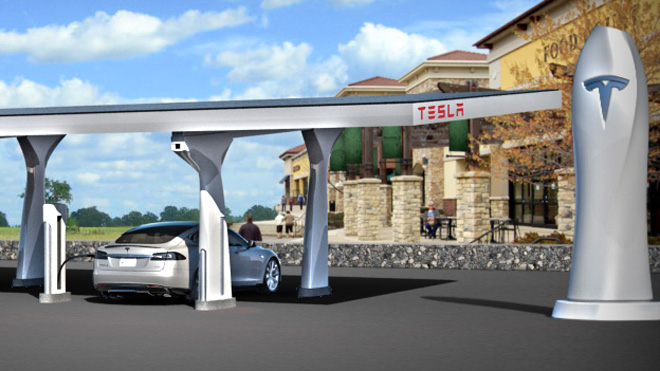There were reports earlier this year questioning the greenness of electric vehicles. As Tesla Motors becomes more popular, winning hearts and minds, Will Oremus of Slate looks into the environmental impact of Elon Musk’s car brand. The opening of “How Green Is a Tesla, Really?“:
“The knock on electric cars has always been the same: They’re great for the environment, but they’re pokey and impractical, and nobody wants to buy one. The stunning success story of the Tesla Model S has, improbably, flipped that equation. It’s blazingly fast, surprisingly practical, and everyone wants to buy one. But now some critics are asking: How green is it, really?
The quick answer: If current trends hold, it could be pretty darn green in the long run. But as of today, the calculation isn’t as straightforward as you might think. Depending on whom you ask, what assumptions you make, and how you quantify environmental impact, the answer could range from ‘greener than a Prius’ to ‘as dirty as an SUV.’ And where the Tesla falls on that spectrum depends to a surprising extent on where you live and how much you drive it.
Electric cars are squeaky clean, of course, in the sense that they don’t burn gas. With no engine, no gas tank, and no exhaust, they’re considered to be zero-emissions vehicles. But there’s more to a vehicle’s environmental impact than what comes out of the tailpipe. The Tesla doesn’t run on air. It runs on electricity, which in turn is generated from a range of different sources, from nuclear fission to natural gas to the darkest, dirtiest fossil fuel of them all: coal.”
Tags: Elon Musk, Will Oremus

